How to plant onions for the winter and at what depth?
Onions are one of the most common crops to grow not only in Russia, but throughout the world. It is unpretentious in care and does not require special agricultural techniques that are difficult for beginning farmers. Often, crop shortages occur already at the beginning of autumn, so many people plant vegetables before winter. We'll tell you how to do it correctly in the article.
Landing Features
For growing Before winter, varieties with resistance to low temperatures are used. Plantings under snow should have at least 5–7 leaves so that the bulbs can wait out a long period of hibernation.
To protect from early frosts, the area is covered. To reduce crop losses, winter onion plantings are increased by about 1/10.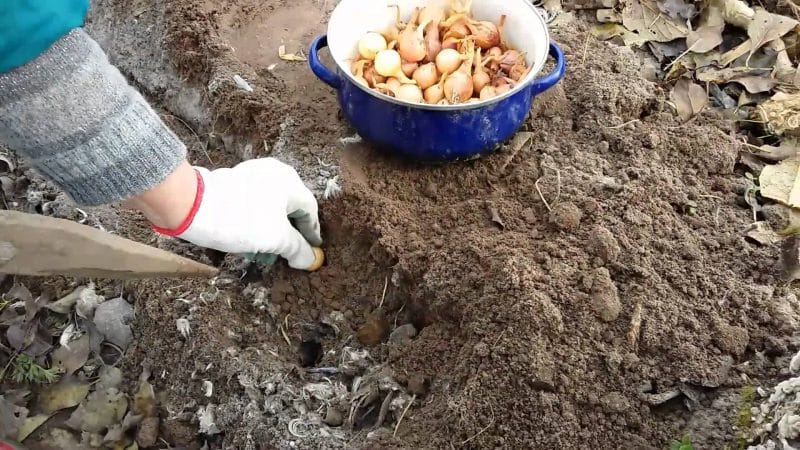
Varieties and hybrids
Among winter crops varieties of onions popular:
- Shakespeare;
- Senshui;
- Centurion F1;
- Struton;
- Strigunovsky;
- Red Baron;
- Snowball;
- Buran;
- Robin.
Planting varieties not intended for winter cultivation will lead to abundant bolting of bulbs in the spring and loss of yield.
When to plant onions before winter
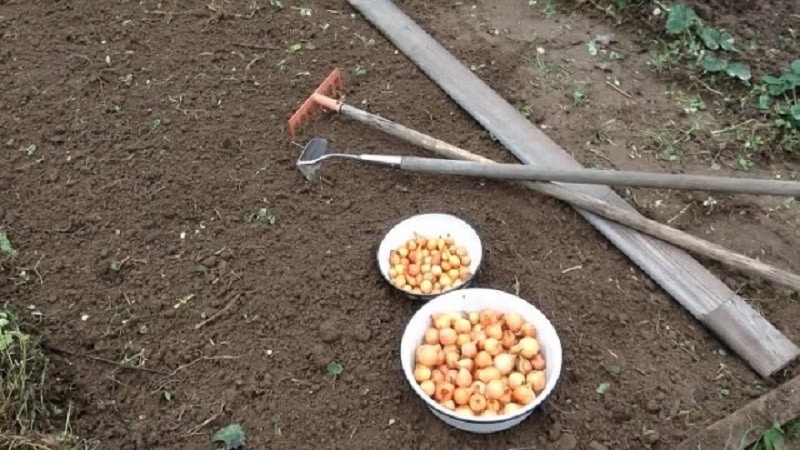
For winter growing, it is important to choose the timing wisely: planting too early will lead to the growth of vegetables, and planting too late will prevent them from taking root. In both cases, most of the plants will die.
When determining the timing, the climatic conditions of the region and the botanical characteristics of onions are taken into account. The optimal average daily temperature for planting crops in most regions is about +5...+7°C.
Important! The bulbs take root on average within 2–2.5 weeks.
Planting times depending on region
For the southern regions, the dates vary from the last ten days of October to mid-November. If autumn is cold, onions are planted earlier.
In central Russia, sowing is carried out mainly in October, less often in early November, if weather conditions permit.
In the Urals, winter onions are treated with caution due to the risk of a strong drop in temperature in the fall and weathering of the snow cover. Planting dates in the region fall at the junction of September and October, but the area is protected from frost.
In Siberia, the crop is mainly planted in the spring. Winter sowing is carried out no later than the end of September. The beds are covered not only for the period of autumn frosts, but also for snow.
Landing technology
The productivity of winter crops depends both on the correctly selected variety and on agricultural technology. The soil must be fertile enough for the bulbs to take root. Soil poor in nutrients will not allow the plant root system to form, and the crop will die.
Crop rotation
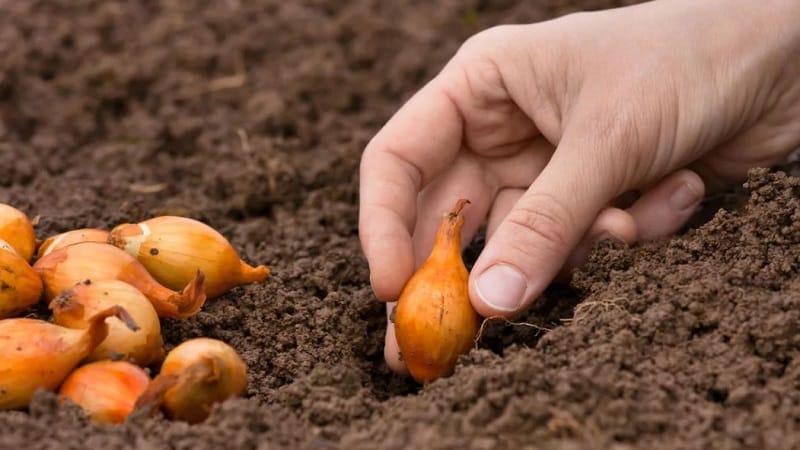
Proper crop rotation will allow you to get a bountiful harvest and protect the soil from pests and diseases. Properly selected precursors will maintain a certain acidity of the soil.
Onions are planted after:
- cucumbers;
- legumes: peas, beans;
- rapeseed;
- beets;
- mustard;
- pumpkins;
- zucchini;
- tomatoes.
Bad predecessors: spring onions, any types of garlic, radishes, rutabaga, cabbage, celery, carrots, parsley, parsnips. These crops greatly deplete the soil, especially of nitrogen and phosphorus, which are necessary for the formation of the root system and leaves.
Important! After potatoes, alfalfa, and clover, there is a high risk of infection with nematodes.
Preparing the bed
Choose a site that is protected from the winds, well-lit, where in the spring the snow quickly melts and the melt water does not stagnate. The soil should be loose with a neutral acid-base balance. After harvesting the predecessor crop, the soil is enriched with mineral and organic fertilizers, preferably at the time of the first digging.
For this use:
- humus or compost (one bucket per 1 m2 of soil);
- superphosphate (2 tbsp per 1 m2) or wood ash (100 g per 1 m2);
- urea (1 tbsp per 1 m2).
It is pointless to add pure manure, since it will rot only in the spring and cause organic burns to the crops.
Ground chalk or lime is additionally added to acidic soil to alkalize it.
Before sowing, all remnants of other crops and weeds are removed from the beds: the larvae and pupae of harmful insects remain on them. The area is disinfected with a solution of copper sulfate.
The soil is dug up to a depth of at least 20–25 cm and left unleveled to ensure air flow. On such soil, various pests quickly die under the influence of low temperatures.
Preparing the bulbs
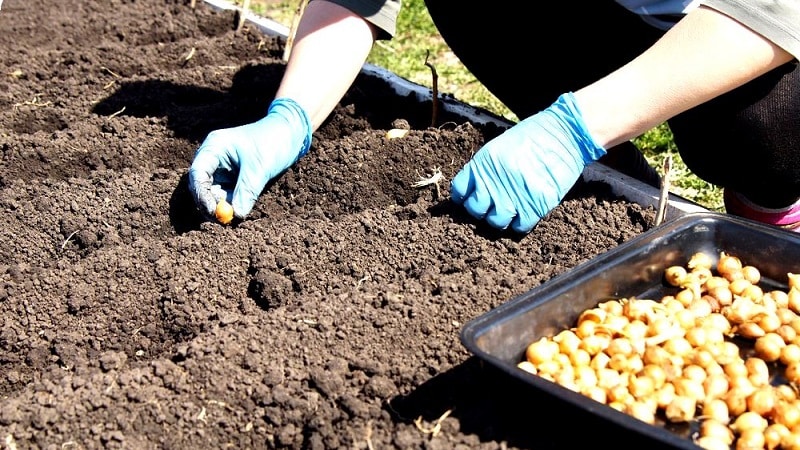
To obtain a good harvest, the seed material is sorted. Soft, damaged, dried specimens with signs of disease are rejected. Not only will they not germinate, but they will provoke the appearance of diseases.
Bulbs are calibrated by size:
- wild oatmeal - up to 1 cm;
- sevok - 1-2 cm;
- samples - more than 3 cm.
Sets are more suitable for spring planting. Before winter, wild oats are used: they grow more slowly, but take root faster. Large specimens are planted only to obtain early greenery.
Two weeks before being buried in the beds, selected and calibrated onions are laid out in one layer in a well-lit and warmed place.This will allow the root system to form faster, increase the survival rate and resistance of the crop to adverse weather conditions both in autumn and spring.
Important! When planting in winter, the feathers of vegetables are not trimmed.
The seed material is disinfected in one of the following products:
- saline solution (1 tbsp table salt per 1 liter of boiled water at room temperature) - 5 minutes;
- copper sulfate (1 tbsp per 1 liter of boiled water) - 5 minutes;
- weak pink solution of potassium permanganate - 3-5 minutes.
Processed bulbs spread on gauze, paper or cotton cloth and dry for one day. Disinfected material is planted as soon as possible to avoid reintroducing pathogens.
Experienced vegetable growers additionally treat wild oatmeal with antifungal drugs (for example, Fitosporin-M).
At what depth to plant onions for the winter?
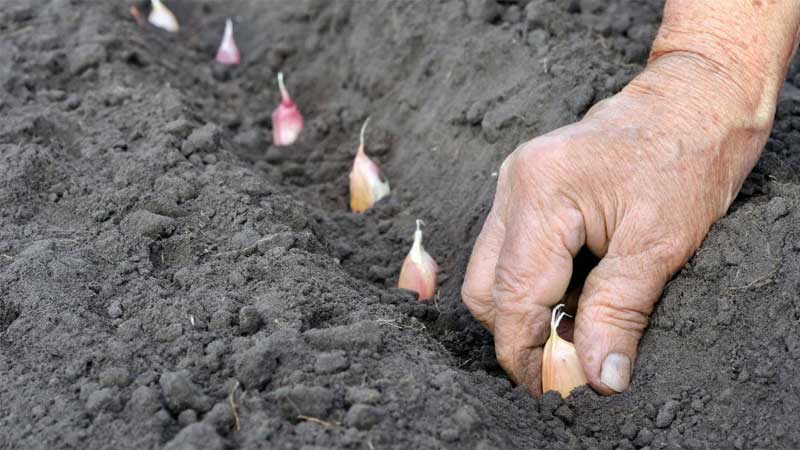
The planting depth varies for different categories of seed. For wild oats and sets, it depends on the immediate size of the specimens themselves. The average depth for planting onions before winter is at least 5–8 cm, since the thickness of the soil layer above the crops should not be less than 1.5–2 cm. Recommended planting depth:
- wild oatmeal - 3-4 cm;
- sevok - 4–6 cm;
- samples - 6–8 cm.
Scheme
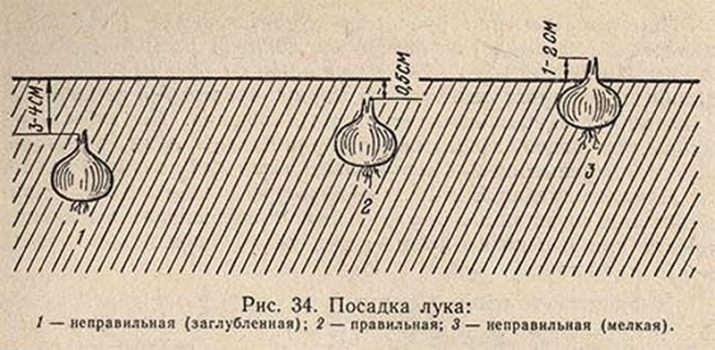
The planting scheme depends on the purpose of the onion. For the winter, sets are grown for turnips and partly for feathers, wild oats for turnips, large bulbs over 3 cm for early greens.
Furrows are made along or across the bed, retreating from its boundaries by 3–5 cm, and shed with warm water. Distance between them:
- for wild oatmeal - 35–40 cm;
- for sets - 30–35 cm;
- for sampling - 15–20 cm.
Different distances are maintained between vegetables:
- wild oatmeal - 5-6 cm;
- sevok - 7-8 cm;
- samples - 3–5 cm.
Larger bulbs grown for seeds and greenery are placed close to each other.
Features of care
Despite the unpretentiousness of winter onions, they need some care in the fall and early spring, and, if possible, in the winter. In the fall, after germination, the plantings are fed with superphosphate or nitrogen fertilizers according to the instructions. In this case, it is better to underfeed than to overfeed the plants. In dry autumn, infrequent watering is allowed.
Before mulching, the soil in the beds is loosened. Do this carefully so as not to damage the bulbs. Cover the area with agrofibre or spruce branches, mulch with straw, pine needles, dry sawdust, and tomato tops.
In winter, it is advisable to additionally insulate the beds with snow, this is especially important in winters with little snow.
In the spring, the shelter is removed, leaving it only overnight if there is a risk of spring frosts. Further care comes down to regular loosening, watering and weeding, as with spring onions.
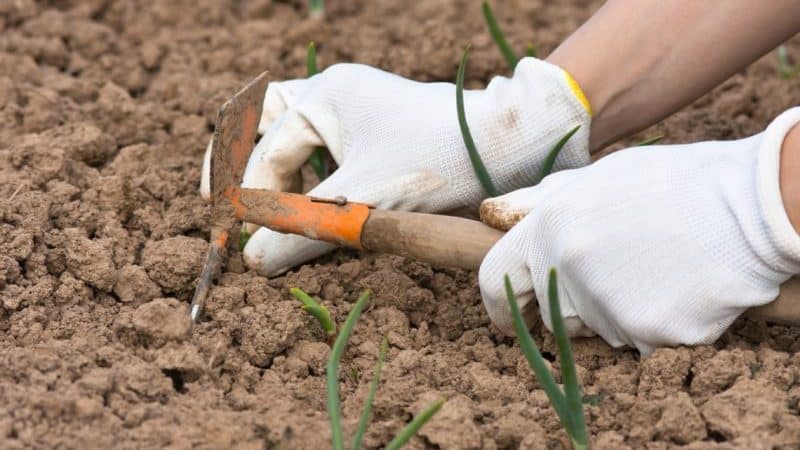
When to Harvest
Winter onions begin to be harvested at the beginning of summer, after the feathers dry out.. Yellowing and the foliage sticking to the ground is the most obvious sign that the turnips are ripe. Dig the bulbs in dry weather, carefully pulling them out at the base of the feathers. The harvest is dried in an open space in partial shade, avoiding direct sunlight, especially in the first days after harvesting.
Conclusion
Autumn planting of onions saves time in the spring and allows you to get an early harvest, and use the free space for a new crop. Winter vegetables have good shelf life, are less susceptible to attack by pests and are resistant to diseases.
Due to the risks of autumn and spring frosts and harsh climatic conditions in most of Russia, this method of cultivation is often neglected, although with the right agricultural technology a rich harvest is obtained even in the Urals and Siberia.